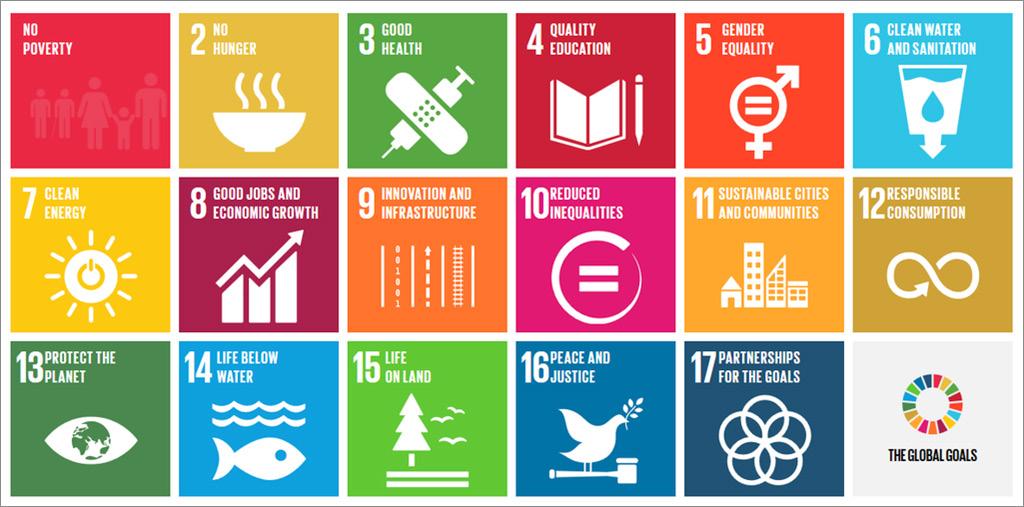
4 minute read
SUSTAINABLE DEVELOPMENT GOALS
from Africa Anti-trafficking Consultation Booklet
by International Social Justice Commission - The Salvation Army
In 2016 the United Nations officially launched the 17 Sustainable Development Goals (SDGs) composed of 169 targets for the next 15 years. These build onmany of the accomplishments that were achieved with the original Millennium Development Goals (MDGs). Three of the SDG’s will focus on human trafficking and slavery.
SDG 5: Achieve gender equality and empower all women and girls.
The context: • The proportion of women in paid employment outside the agriculture sector has increased from 35% in 1990 to 41% in 2015. • More than 700 million women alive today were married before they turned 18, 1 in 3 before the age of 15. • Women and girls made up 70% of detected human trafficking victims between 2010-2012. They encompass the vast majority of detected victims for sex trafficking.
Target 5.2 specifically addresses trafficking calls for countries to, “Eliminate all forms of violence against all women and girls in the public and private spheres, including trafficking and sexual and other types of exploitation.” This goal conceives trafficking and exploitation as a form of 30 gender discrimination and violence against women. Many of the other goals under this target are connected to trafficking, including the elimination of harmful practices such as child marriage, the call to value unpaid care and domestic workers, and the creation and implementation of policies to promote gender equality at all levels of society. While women and girls do make up the majority of sex trafficking victims, this goal may divert funding needed also to help other groups that are also affected by commercial sexual exploitation.
SDG 8: Promote sustained, inclusive and sustainable economic growth, full and productive employment and decent work for all.
The context: • Nearly 2.2 billion people – roughly half of the world’s population – still live on less than US $2 per day, trapping them in extreme poverty. Stable, well-paid jobs are needed to address this disparity. • According to the ILO, 21 million people are affected by forced labour, trafficking and slavery around the world today. Of those, 68% are exploited in the labour sector – in industries like agriculture, mining, construction, and domestic work.
• 470 million jobs are needed globally for young people as new entrants to the labour market between 2016 and 2030.
Target 8.7 calls for nations to, “Take immediate and effective measures to eradicate forced labour, end modern slavery and human trafficking and secure the prohibition and elimination of the worst forms of child labour, including recruitment and use of child soldiers, and by 2025 end child labour in all its forms.” This is arguably the most direct target focusing on the issue of human trafficking, and has been celebrated by the anti-trafficking field.
The other targets under this goal are equally important in ending trafficking since they have a particular focus on access to decent, stable work. In too many places, people are without work, and the jobs that are available to them do not offer an escape from poverty. Poverty is one of the root causes for slavery and human trafficking. Situations of desperation are created when families and parents struggle to put food on the table, access health care, or afford school fees to educate their children. Offers to travel abroad in the hopes of a better life become more tempting for parents and children alike. Many cases of human trafficking begin with an individual looking for decent work. If nations truly invest in economic opportunities over the next 15 years, we would address one of the main vulnerabilities that place people at risk to trafficking in the first place.
Goal 16: Promote peaceful and inclusive societies for sustainable development, provide access to justice for all and build effective, accountable and inclusive institutions at all levels. The context: • Half of children in countries affected by conflict had left primary school by 2011. Children who are not in school are more likely to be working, and are vulnerable to trafficking. • Although basic laws to address human trafficking are in place in most countries, conviction rates remain extremely low, creating a high profit / low risk industry. • The ILO estimates that human trafficking and forced labour create illicit profits of $150 billion annually. • A recent report by UNICEF illustrated how violence to young children can affect the development of the brain, similar to the effects of malnutrition.
Target 16.2 calls for the nations to “End abuse, exploitation, trafficking and all forms of violence against and torture of children.” Other targets, such as combatting organized crime, promoting the rule of law, and reducing all forms of violence are all connected to ending trafficking. In particular, one of the targets focuses on providing legal identity for all, including birth registration. When children lack a legal identity, they are often unable to access health care, education, and other social services. They also can’t prove their age. Traffickers often exploit this vulnerability and force children who are too young to legally work into labour and force young girls into marriages. It’s crucial that all children have access to a birth certificate.
Adapted from www.unicefusa.org/stories/sustainable-development-goals-aim-end-human-trafficking/29864











